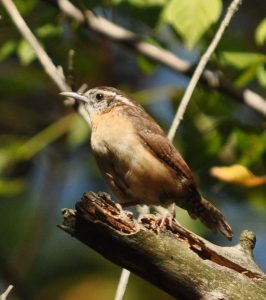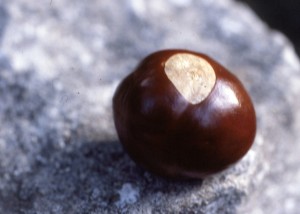Daffodils are in bloom, students walk around in shorts and T-shirts, so it must be the beginning of tick season. And indeed, the first ticks are out and questing (= searching for a host). This might be a good time to talk about ticks in Ohio. Ohio is not a major center for tick diversity, but it has some diversity. Most people only know the three main people biters, Dermacentor variabilis (American dog tick), Amblyomma americanum (lone star tick), and Ixodes scapularis (deer tick), so let’s start with these:
Dermacentor variabilis is perhaps the most widespread and common tick in Ohio. Immatures feed on rodents and other small animals, but adults feed on medium (opossums, raccoons, dogs) to large (humans) mammals. Of the “big three” this species is the most tolerant of drying out, and the most likely to be encountered in open areas. The main activity period for adults is mid-April – mid-July. D. variabilis is the vector of, among others, Rocky Mountain Spotted Fever (RMSF) and tularemia. Columbus used to be a focal area for RMSF, but the disease is less common now. D. variabilis may also cause tick paralysis, although less frequently than the related D. andersoni from the Rocky Mountains region.
Amblyomma americanum used to be uncommon in southern Ohio, but has increased in numbers and range over the last decades. This is part of a general trend. In the eastern U.S., this species is rapidly expanding its range northwards. All instars, larva, nymph, and adult feed on mid-size to large animals, incl. humans. Like D. variabilis, females can deposit very large clutches of eggs, but in this case the resulting larvae often stay together. If you are unlucky and step close to a mass of these “seed ticks”, you may be attacked by hundreds of ticks simultaneously. These ticks are active in all warm months of the year. Unlike D. variabilis, “Lone stars” are not common in open areas, preferring more shady and humid sites. For a long time A. americanum was listed as vectoring few human diseases, but it has now been identified as vector of human monocytic ehrlichiosis and STARI, and possibly tularemia and Q-fever.
Ixodes scapularis appears to be an even more recent resident. This species was rare or absent in Ohio before 2010, but has now been found in a majority of Ohio counties. The reason for this sudden expansion is unclear. This is a relatively small species. Larvae can be found in summer, nymphs late summer, and adults in fall and early spring. Immatures tend to feed on smaller sized hosts, e.g. rodents, small birds, while adults prefer larger hosts, such as deer. However, all instars may attach to humans. Nymphs are considered the most problematic: they are small (thus often undetected), and can be infected with e.g. Lyme disease (unlike the even smaller larvae). Like A. americanum, this species prefers shady, humid environments. New subdivisions build in forests, resulting in large amounts of forest edges with lots of deer, have been a very good habitat for this tick in New England. Ixodes scapularis has become famous as the vector for, among others, Lyme disease, human granulocytic anaplasmosis, and babesiosis. Co-infection is common in New England and appears to result in increased pathology.
So much for the common people biters. It is important to note that most species of tick rarely if ever bite people. They prefer different, usually smaller, hosts. For example, Rhipicephalus sanguineus, the brown dog tick prefers feeding on dogs. It is one of the few species that may occur indoors in dog kennels etc. Haemaphylis leporispalustris appears to be specialized on hares and rabbits. Several Ixodes species, I. cookei, I. dentatus, I. kingi, I. marxi, can be found on small to medium sized mammals, often associated with nests or burrows. Finally, the so-called soft ticks, family Argasidae, are represented by only a single species in Ohio, Carios kelleyi, primarily found in bat colonies.
Find out more about the ticks’ life cycles and their diseases.
 About the Author: Dr. Hans Klompen is professor in the department of Evolution, Ecology and Organismal Biology and director of the Ohio State University Acarology Collection.
About the Author: Dr. Hans Klompen is professor in the department of Evolution, Ecology and Organismal Biology and director of the Ohio State University Acarology Collection.
*** Have you found a tick yet this spring? send us a photo of your specimen on Facebook! ***



















































